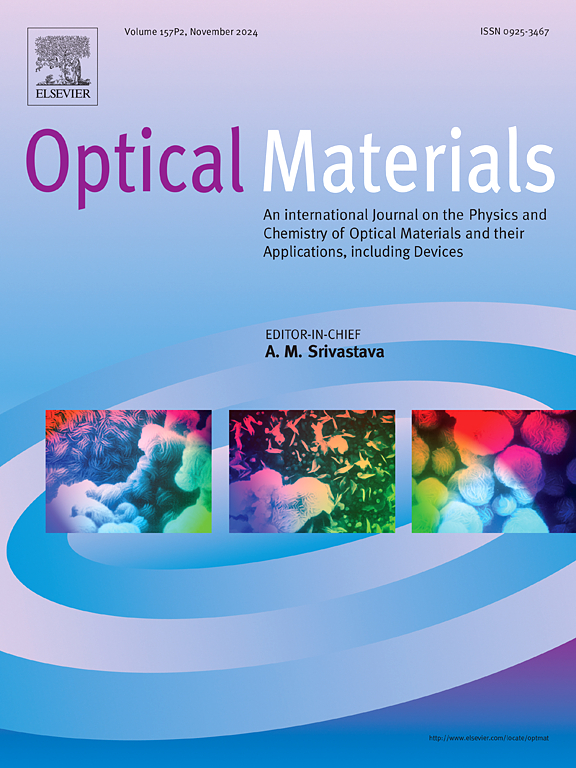Highly visible photoluminescence in biocompatible liquids obtained by rehydration of Saccharina latissima algae at room temperature
IF 3.8
3区 材料科学
Q2 MATERIALS SCIENCE, MULTIDISCIPLINARY
引用次数: 0
Abstract
The rehydration process of air-dried algae Saccharina latissima, obtained with distilled water and/or with phosphate-buffered saline solution (PBS), led to the formation of a highly photoluminescent liquid. The structure-function relationships for the bioactivities of these algae are still little known and undisclosed. The aim of this work is twofold: to describe the surprising behavior of the Saccharina latissima when it is rehydrated at room temperature and to attempt its release in liquids that appear photoluminescent under UV excitation.
Rehydration seems to release nanometric-sized molecules into the liquid, making it absorbent in the near UV. Polysaccharides and phenols, released by the algae, act as quantum dots dispersed in the liquid. The absorption of UV light by the liquid, at 365 nm, induces luminescence in the visible wavelength region with high emission in the blue band, around 478 nm. Further release removes larger nanoparticles that emit first in the green-yellow regions and subsequently in the brown-orange-red regions.
Characterization measurements of the biocompatible luminescent liquid were performed by considering optical spectroscopies in the UV, Visible, and IR ranges, and electron microscopy.
Possible applications, such as bioimaging, diagnostics, and therapy, together with the possibility to realize luminescent films and devices, are proposed, and some are described as well.
在室温下由糖精藻再水合获得的生物相容性液体的高度可见光致发光
用蒸馏水和/或磷酸盐缓冲盐水溶液(PBS)获得的风干藻类Saccharina latissima的再水化过程导致形成高度光致发光的液体。这些藻类的生物活性的结构-功能关系仍然知之甚少和未公开。这项工作的目的是双重的:描述在室温下再水化时的令人惊讶的行为,并尝试将其释放到在紫外线激发下出现光致发光的液体中。再水合作用似乎会释放纳米大小的分子到液体中,使其在近紫外线下具有吸收性。藻类释放的多糖和酚类物质就像分散在液体中的量子点一样。液体对365 nm紫外光的吸收,在可见波长区域产生发光,在478 nm左右的蓝色波段具有高发射。进一步的释放会去除较大的纳米颗粒,这些纳米颗粒首先在黄绿色区域释放,随后在棕黄红色区域释放。通过紫外、可见光和红外光谱以及电子显微镜对生物相容性发光液进行表征测量。可能的应用,如生物成像,诊断和治疗,以及实现发光薄膜和器件的可能性,提出,并描述了一些。
本文章由计算机程序翻译,如有差异,请以英文原文为准。
求助全文
约1分钟内获得全文
求助全文
来源期刊

Optical Materials
工程技术-材料科学:综合
CiteScore
6.60
自引率
12.80%
发文量
1265
审稿时长
38 days
期刊介绍:
Optical Materials has an open access mirror journal Optical Materials: X, sharing the same aims and scope, editorial team, submission system and rigorous peer review.
The purpose of Optical Materials is to provide a means of communication and technology transfer between researchers who are interested in materials for potential device applications. The journal publishes original papers and review articles on the design, synthesis, characterisation and applications of optical materials.
OPTICAL MATERIALS focuses on:
• Optical Properties of Material Systems;
• The Materials Aspects of Optical Phenomena;
• The Materials Aspects of Devices and Applications.
Authors can submit separate research elements describing their data to Data in Brief and methods to Methods X.
 求助内容:
求助内容: 应助结果提醒方式:
应助结果提醒方式:


